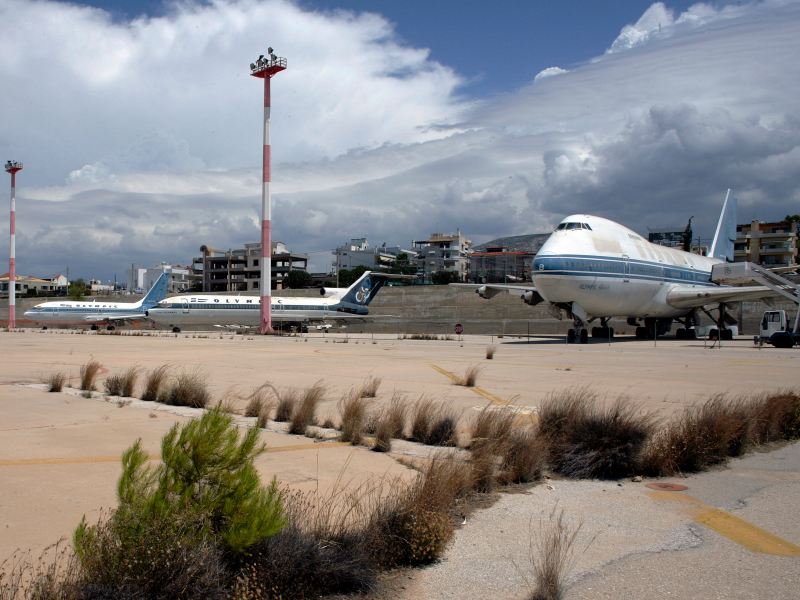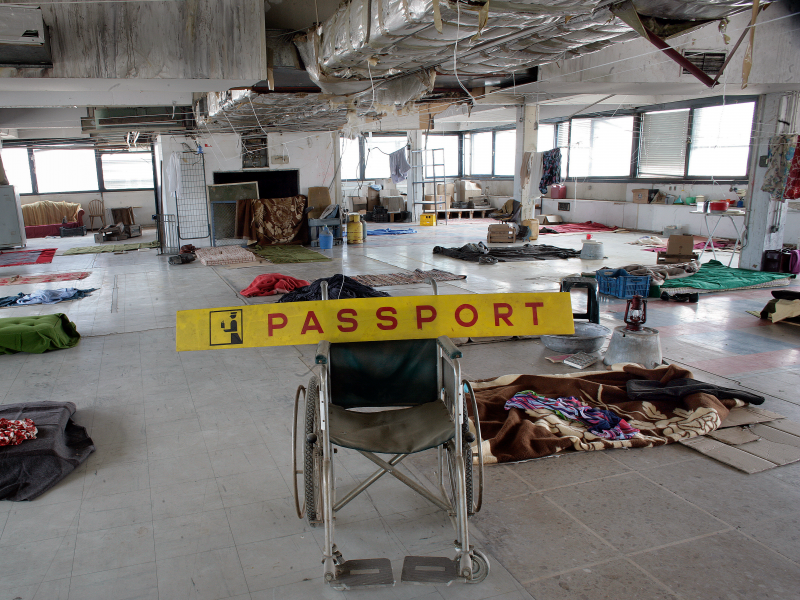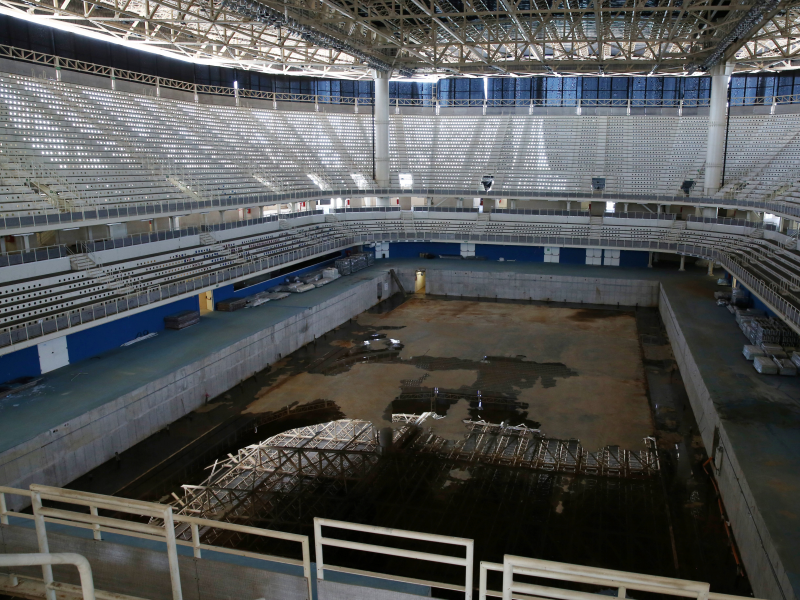- Some of the most expensive structures ever built now sit empty.
- A luxury resort in Croatia, Olympic venues in Brazil, and an airport in Greece are just a few of these pricey constructions that are now deserted.
- These places became abandoned for various reasons, ranging from mismanagement and financial troubles to nuclear disasters.
Around the world, massive structures that likely cost millions to build, including amusement parks, airports, resorts, and Olympic arenas, now sit abandoned.
From Olympic venues in Brazil to an amusement park that was meant to be the largest in Asia, these constructions were abandoned due to financial woes, mismanagement, war, or even nuclear disaster.
Here’s a look at some of the most expensive structures ever built that now sit empty, many of them in ruins.
The Hellenikon International Airport in Greece used to be Athens' main airport, serving over 12 million passengers a year.

Source: Business Insider
But the airport closed in 2001 after being replaced by Athens International Airport, and it has sat abandoned ever since.

Source: Business Insider
Several plans to redevelop the airport have faltered. But a development group recently promised to start transforming the site into a metropolitan park starting in 2019, which will include residential areas, hotels, shopping centers, theme parks, museums, sports facilities, and more.

Source: Greek Travel Pages
The Pripyat amusement park in Ukraine was meant to be opened on May 1, 1986, but opening day was cancelled when the catastrophic nuclear disaster, Chernobyl, took place just a couple of miles away on April 26.

Source: Atlas Obscura
Some reports say that the park was briefly opened to entertain townspeople on April 27 when evacuation orders were issued.

Source: The Weather Network
There are still varying levels of radiation present in the park, with the area under the Ferris wheel having the highest levels.

Source: Atlas Obscura
The Aquatics Stadium built for the 2016 Olympic Games in Rio de Janeiro, Brazil, now sits in disrepair.

Source: Business Insider
Huge, dirty puddles now stand where Olympians once swam.

Source: Business Insider
The city of Rio spent an estimated $13 billion on the Olympics, and several of the venues have since begun to fall apart.

Source: Business Insider
This towering, pyramid-shaped structure nicknamed the "Hotel of Doom" is the currently uninhabited Ryugyong Hotel in Pyongyang, North Korea, which started being built in the 1980s.

Source: Business Insider
The 105-story hotel was meant to be one of the world's tallest structures, but when construction halted in the 1990s, reportedly due to engineering problems and a lack of funds, the Ryugyong became the world's tallest unoccupied building. It's about 1,082 feet tall and has cost an estimated $583.7 million to build.

Sources: Business Insider, Guinness World Records, Mirror
Rumors have swirled that the hotel may be finished and opened soon, especially when it was lit up for the 70th anniversary of the country's foundation, but for the moment, it seems to sit empty.

Source: Business Insider
"Wonderland" is an abandoned 120-acre amusement park 20 miles outside of Beijing that was never finished. Financial issues brought construction to a halt in 1998. In 2008, construction briefly resume, only to then stop again.

Source: Business Insider
Half-finished, decrepit structures sat for years on the land that was meant to be the largest amusement park in all of Asia. In 2013, the majority of the park, including this medieval-looking fortress, was demolished.

Source: Business Insider
Today, the incomplete, Disney-esque castle is one of the few structures still remaining, now visited only by farmers who use the land to grow crops.

Source: Business Insider
The futuristic yet bizarre-looking San-Zhi Pod City in Taiwan was conceived in the 1970s to be a high-end futuristic beach resort for the wealthy.

Source: OZY
The village, filled with colorful pods that resemble UFOs, was never completed due to a shortage of funding and several construction accidents.

Source: Business Insider
There have been rumors of an impending demolition of the village, but for now, the brightly-colored space pods still stand.

Source: OZY
Japan’s Hashima Island, nicknamed "Battleship Island," was once one of the most densely populated areas in the world, but no one has lived there since the mid-1970s.

Source: National Geographic
The island was known for its lucrative underseas coal mines. In 1959, more than 5,000 people lived there, primarily mine workers and their families.

Source: INSIDER
But when the coal mines were closed in 1974, the people deserted the island. It's been abandoned ever since, only visited by sightseeing tours.

Source: INSIDER
The Haludovo Palace Hotel on the Croatian island of Krk was a high-end vacation destination in the 1970s and 80s. It was meant to be "a haven of extreme decadence for upscale vacationers on the Adriatic Sea," according to the Associated Press.

Source: Atlas Obscura, Associated Press
It became even more upscale when a wealthy magazine owner invested $45 million in the property and renamed it the Penthouse Adriatic Club Casino a year after it opened.

Source: Atlas Obscura
But after war broke out in Yugoslavia (a country that formerly encapsulated Serbia, Croatia, Slovenia, Macedonia, Montenegro, and Bosnia and Herzegovina) in the 1990s and foreign tourists stopped coming, the hotel shut down. The formerly lavish resort remains empty today.

Source: Atlas Obscura
The Lee Plaza in Detroit was built in 1927 as a luxury apartment hotel featuring amenities that included a concierge and room service. The art-deco hotel faced many financial and legal problems over the years, especially during the Great Depression.

Source: INSIDER, Crain's Detroit
The once-luxurious hotel was closed in 1997 after it was converted to low-income senior housing. Since then, it has been left to deteriorate. But the city of Detroit is currently searching for developers to refurbish the historic site.

Source: Detroit Free Press
The city has rejected three bids in 2018 to redevelop the property and was accepting new proposals as of August. A $400,000 project is in progress in the meantime to clear window boarding and remove asbestos and lead.

Source: Crain's Detroit
The Constanta Casino in Romania was once considered the country's own Monte Carlo, hosting wealthy travelers and glamorous royal parties.

Source: The Daily Mail, Business Insider
The Art Nouveau-style structure was built around 1900, commissioned by King Carol I, and opened to the public as a casino in 1910. It survived bombings in both world wars.

Source: Business Insider, The Independent UK
But the building eventually became too expensive to maintain and shut down in 1990. According to Romania's Business Review, the casino's roof is in danger of collapsing due to corrosion and rusting to its structural metal parts from sea storms and windows, which have shattered the windows that face the sea.

Source: The Daily Mail, Business Review

